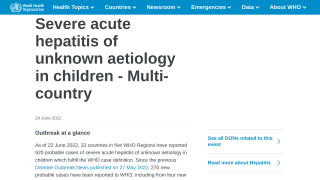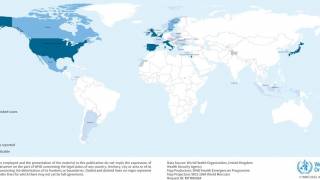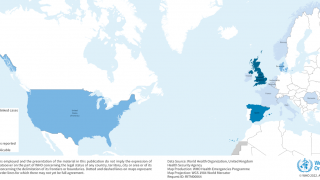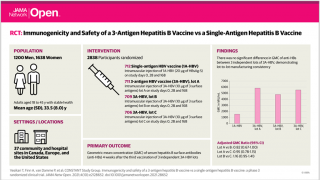Hepatitis B Vaccinations: Good and Bad News

There is good news from the World Health Organization (WHO) regarding infant hepatitis B virus infections.
According to this WHO’s new report, the prevalence of chronic HBV infection in children aged less than 5 years was estimated at just 1.3 percent.
However, HBV infection remained prevalent among adults worldwide, with an estimated 257 million persons (3.5%) living with chronic HBV infection in 2015.
And, only 27 million adults were aware of their HBV infection.
This is bad news, since persons with chronic HBV infection are at increased risk for cirrhosis and hepatocellular carcinoma, and nearly 900,000 persons die annually from HBV-related outcomes.
In highly endemic areas, hepatitis B is most commonly spread from mother to child at birth. The development of chronic infection is very common in infants infected by their mothers.
And, about 1 percent of persons living with HBV infection (2.7 million people) are also infected with HIV.
Which means, the global prevalence of HBV infection in HIV-infected persons is 7.4 percent.
Additionally, this WHO report includes good news regarding access to medications.
All but 2 of the low- and middle-income countries can access generic entecavir or tenofovir, which treats hepatitis B infection.
And the median price of generic tenofovir has dropped more than 85 percent since 2004.
Since 2015, WHO has recommended treatment for everyone diagnosed with HIV infection, regardless of the stage of the disease. Tenofovir, which is included in the treatment combinations recommended in the first intention against HIV infection, is also active against HBV.
A vaccine against hepatitis B has been available since 1982.
HBV vaccines are reported by the CDC to be 95 percent effective in preventing infection and the development of chronic disease and liver cancer due to hepatitis B.
Over 190 nations have committed to the WHO targets to eliminate the HBV disease by 2030. These targets require 90 percent of children to have received all 3 doses of hepatitis B vaccination.
In the USA, 3 single-antigen vaccines and 2 combination vaccines are currently licensed:
Single-antigen hepatitis B vaccines:
- ENGERIX-B
- RECOMBIVAX HB
- HEPLISAV-B
Combination vaccines:
- PEDIARIX: Combined hepatitis B, diphtheria, tetanus, acellular pertussis (DTaP), and inactivated poliovirus (IPV) vaccine. Cannot be administered before age 6 weeks or after age 7 years.
- TWINRIX: Combined Hepatitis A and hepatitis B vaccine. Recommended for persons aged ≥18 years who are at increased risk for both Hepatitis A virus and HBV infections.
Most pharmacies in the USA offer hepatitis vaccines.
To schedule a vaccination appointment at a local pharmacy, please click here.
The CDC Vaccine Price List provides current HAV vaccine contract prices and general information, and vaccine discounts can be found here.
Vaccines, like any medicine, can have side effects, says the CDC. You are encouraged to report negative side effects of vaccines to the FDA or CDC.
Our Trust Standards: Medical Advisory Committee

























